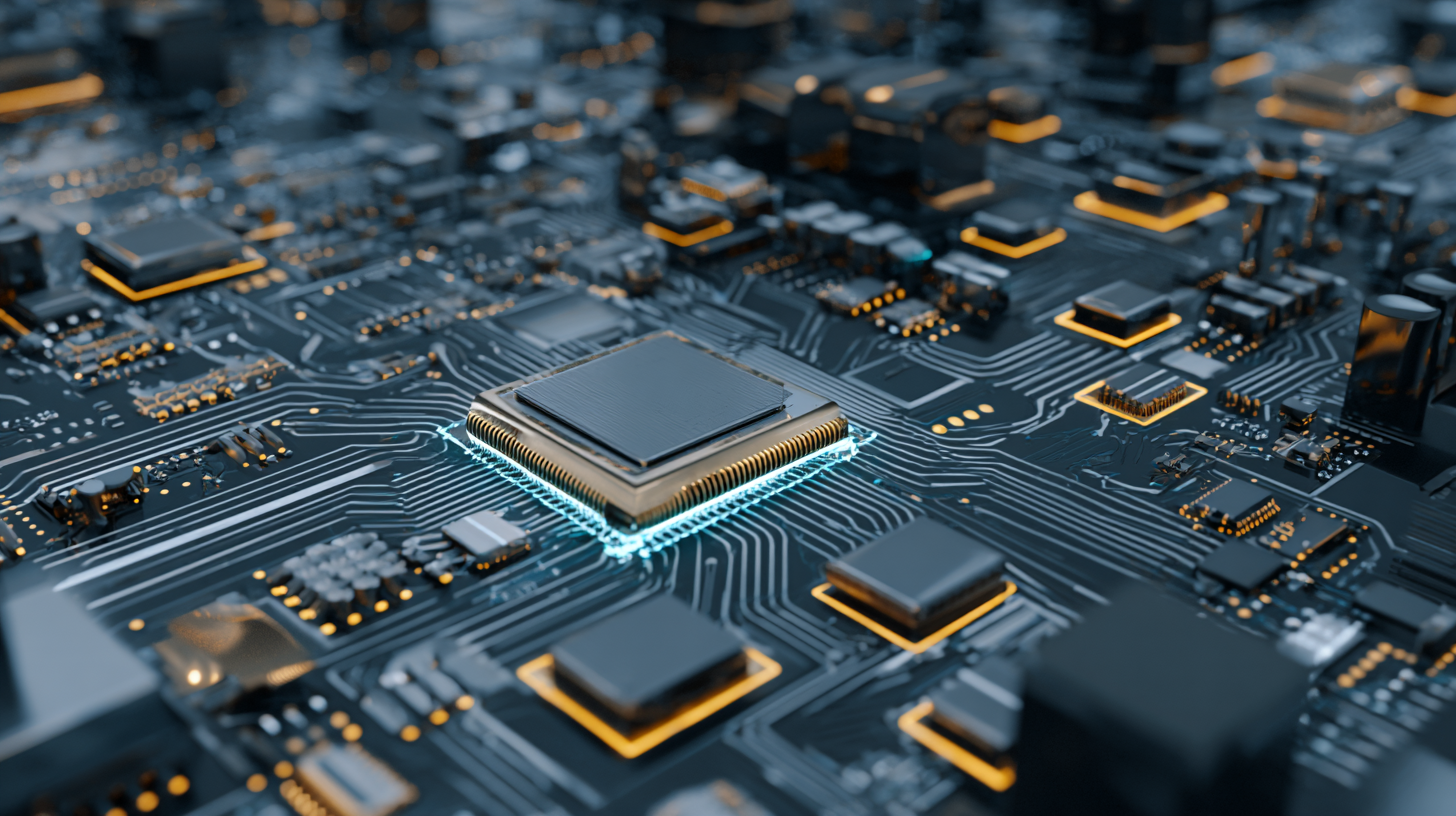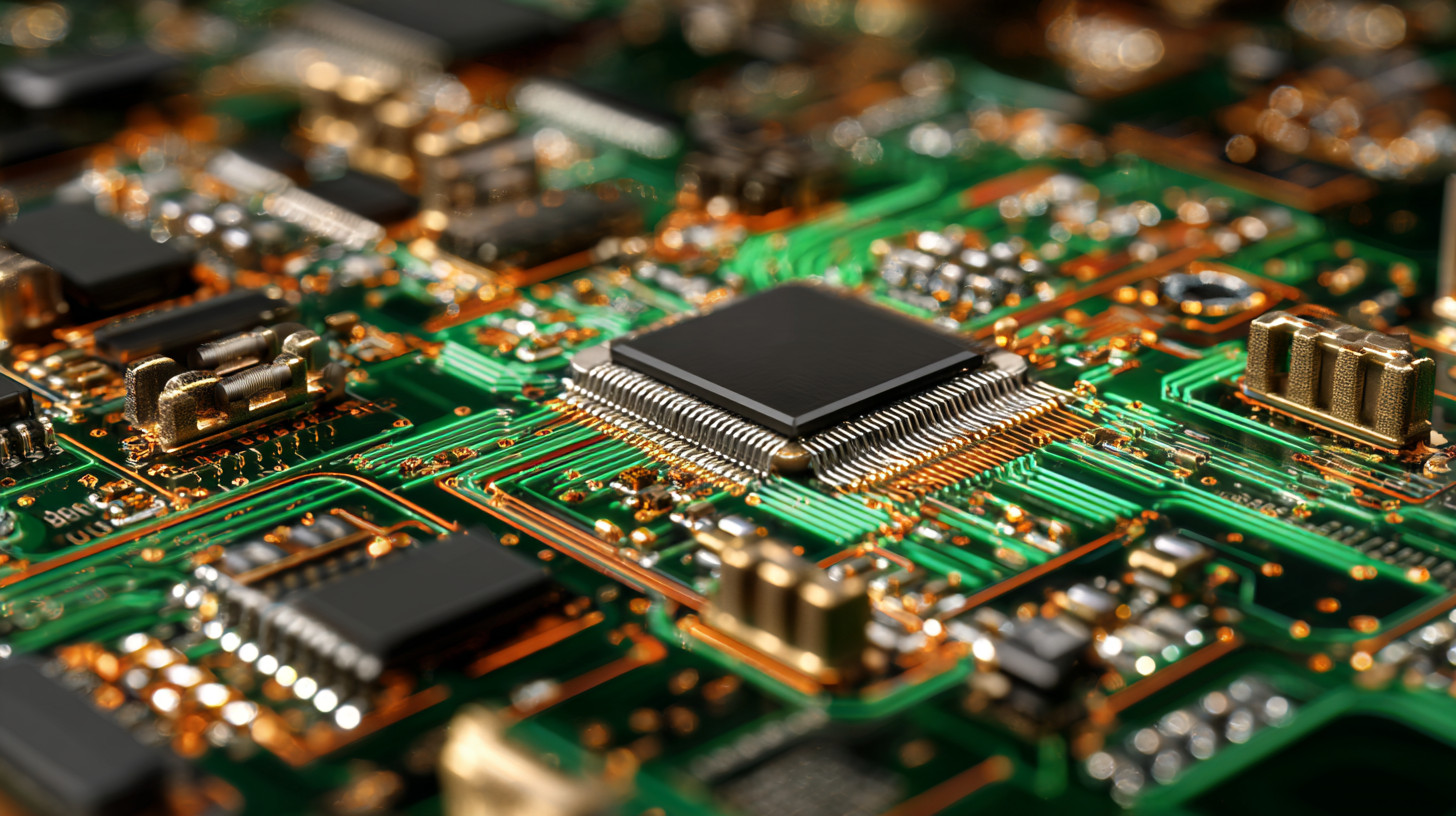
The rapid evolution of technology has significantly impacted the electronics industry, making innovative circuit board design techniques crucial for staying competitive. According to a recent report by Research and Markets, the global PCB (Printed Circuit Board) market is projected to reach $85 billion by 2026, driven by increasing demand for high-performance electronic devices and the rise of IoT applications.

As circuit board design becomes more complex, embracing cutting-edge techniques is essential for engineers and designers alike to enhance functionality and reduce production costs. This guide aims to demystify the various strategies and methodologies in circuit board design, equipping beginners with the knowledge to navigate this vital aspect of modern electronics.
With advancements in technologies such as AI and machine learning, the future of circuit board design is not just about creating more efficient boards but also about revolutionizing the entire design process itself.
The integration of sustainability into circuit board design is becoming increasingly crucial as the tech industry recognizes its environmental impact. Eco-friendly materials not only help reduce waste but also promote a circular economy within electronics. By utilizing biodegradable substrates and non-toxic laminates, designers can create circuit boards that maintain performance while being gentler on the planet. These innovations allow for the development of products that can be easily recycled or disposed of without contributing to pollution.
Another significant advancement in sustainable circuit board design involves the use of conductive inks made from renewable resources. These inks can replace traditional metal components, reducing the reliance on rare and often harmful materials. Additionally, by adopting techniques such as printed electronics, manufacturers can minimize material use and energy consumption during production. This shift toward greener methodologies not only enhances the longevity of electronic devices but also aligns with the growing consumer demand for environmentally responsible products, ultimately paving the way for a more sustainable future in technology.
| Design Technique | Sustainability Focus | Eco-friendly Material | Advantages |
|---|---|---|---|
| Flexible PCB Design | Materials Optimization | Biodegradable Polymers | Reduced Waste |
| High-Density Interconnects (HDI) | Energy Efficiency | Recycled Copper | Improved Performance |
| Multilayer PCBs | Space Savings | Green Epoxy | Compact Designs |
| Embedded Components | Material Minimization | Sustainable Silkscreen Inks | Efficiency in Space |
| Low Thermal Expansion Composites | Heat Management | Natural Fiber Reinforced Plastics | Enhanced Reliability |
 The world of circuit board design is evolving rapidly, and maximizing performance through advanced layout techniques is crucial for efficiency. One fundamental principle is the careful placement of components. By strategically positioning parts in relation to each other, designers can minimize signal interference, reduce trace lengths, and enhance overall circuit functionality. Prioritizing high-frequency components close to their associated connectors can significantly improve signal integrity.
The world of circuit board design is evolving rapidly, and maximizing performance through advanced layout techniques is crucial for efficiency. One fundamental principle is the careful placement of components. By strategically positioning parts in relation to each other, designers can minimize signal interference, reduce trace lengths, and enhance overall circuit functionality. Prioritizing high-frequency components close to their associated connectors can significantly improve signal integrity.
Another key approach is the use of ground planes and power distribution techniques. A solid ground plane minimizes electromagnetic interference and provides a low-resistance path for return currents, which is vital for maintaining signal quality. Additionally, employing techniques such as star grounding can help in managing power distribution more efficiently, ensuring that all components receive stable voltage levels.
Adopting these advanced layout methods not only optimizes circuit performance but also paves the way for more innovative and compact designs that meet the demands of modern technology.
3D printing has emerged as a game-changing technology in the realm of circuit board design and prototyping. This innovative process allows engineers and designers to create complex circuit geometries that were previously impossible or prohibitively expensive to manufacture using traditional methods. By layering materials in a precise manner, designers can incorporate components directly into the board, reducing assembly time and minimizing the risk of errors. This capability not only streamlines the prototyping process but also encourages rapid iteration, allowing for real-time modifications based on performance feedback.
Furthermore, 3D printing provides significant advantages in terms of cost-effectiveness and customization. Designers can produce small numbers of tailored prototypes without the need for expensive molds or tooling, making it feasible for startups and individual inventors to enter the market. The ability to print unique designs quickly enables a more innovative approach, fostering creativity in circuit development and paving the way for advancements in electronics. As the technology continues to evolve, 3D printing is set to redefine circuit board design by making it more accessible and adaptable to the needs of modern engineering challenges.
The integration of artificial intelligence into circuit board design has significantly transformed the industry, enabling designers to produce more innovative and efficient layouts than ever before. According to a recent report by MarketsandMarkets, the global market for AI in electronics is projected to reach $23.78 billion by 2026, reflecting the growing need for automated tools in design processes. These tools not only streamline the workflow but also reduce human error, allowing for quicker iterations and more advanced circuit designs. Features such as predictive analytics help anticipate design flaws, ensuring high-quality outcomes that can meet the rapidly evolving demands of technology.

Tips for utilizing AI tools effectively include exploring simulation software that can visualize the final product before physical prototypes are created. This not only saves time but also resources, as adjustments can be made digitally. Additionally, leveraging AI algorithms for component placement can enhance signal integrity and reduce overall manufacturing costs. These tools learn from historical design data, providing recommendations that optimize not just the design process, but also the final product's performance.
As the industry continues to evolve, incorporating AI-driven design methodologies is no longer just an option but a necessity for staying competitive. Embracing these technologies can position designers at the forefront of innovation, ensuring their projects are not only feasible but also groundbreaking. By leveraging automated tools, professionals in circuit board design can unlock new potentials that drive the future of electronics.
As technology evolves, circuit board design is undergoing a significant transformation shaped by several emerging trends.
One key trend is the integration of multi-layer boards, enabling more complex circuitry and higher functionality in a smaller footprint. This innovation not only conserves space but also enhances performance, making it crucial for devices such as smartphones and wearable technology that demand compact and efficient designs.
Another notable trend is the increasing incorporation of advanced materials such as flexible substrates and printable electronics. These materials allow for more versatile applications, including bendable displays and IoT devices that can be embedded into various surfaces. Additionally, innovations in manufacturing techniques like additive printing are driving down costs and increasing production speed, further accelerating the pace of new product development.
As we decode these trends, it's clear that the future of circuit board technology lies in adaptability and efficiency, paving the way for the next generation of electronic devices.